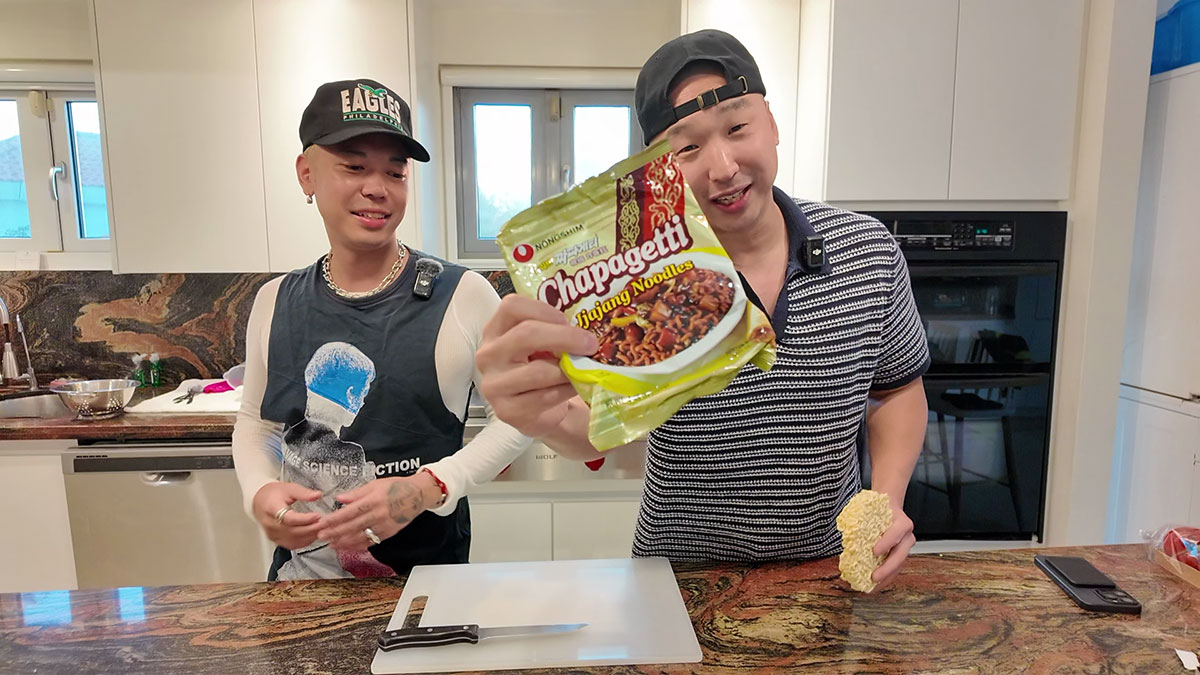
Chapagetti is a jajangmyeon-inspired instant ramen, and my friend Danny Chung will share how to make it uniquely, turning plain noodles into a luscious experience.
Chapagetti is one of the most popular instant ramen in Korea manufactured by the company and brand Nongshim. Since Jajangmyeon is the “Korean version” of spaghetti, the combination of these two words forms the name chapagetti.
In this blog, my dear friend Danny Chung, A&R, songwriter, music producer, and creative director for The Black Label and big names like BLACKPINK, Jay Park, Zion.T, and many more, goes out of his way to share how he makes Chapagetti. Honestly, instant ramen should be quick to make and fill you up, but he takes his time and he takes this seriously. Nevertheless, when I came to know the story behind it, it moved my heart and truly inspired me.
Oftentimes, people would find this particular instant ramen bland or bitter. It’s an acquired taste, for sure. However, with a few add-ons and little tweaks in steps, the texture, the taste, and the overall presentation make all the difference. I hope you guys enjoy it too!
Ingredients You’ll Need
Disclaimer: I get a small commission at no additional cost to you when you make a qualified purchase under the affiliate links.
- Nongshim Chapagetti – The star of the dish.
- Egg – This needs to be taken out of the fridge so it can warm up and be cooked evenly later on. It also needs to be kept with a runny yolk when cooked so that it adds a creamy and velvety texture and flavor to the sauce.
- Cucumber – For garnish that will add freshness and crunch to the noodles.
- Gochugaru – For additional heat, which you can add according to your preference.
- Kimchi – Served as a side dish for that crisp, freshness, and acidity that will balance the lusciousness of the sauce.
How to Cook and Serve Chapagetti?

Prepare the ingredients: Slice the cucumbers julienne and take the eggs out of the fridge to warm up.
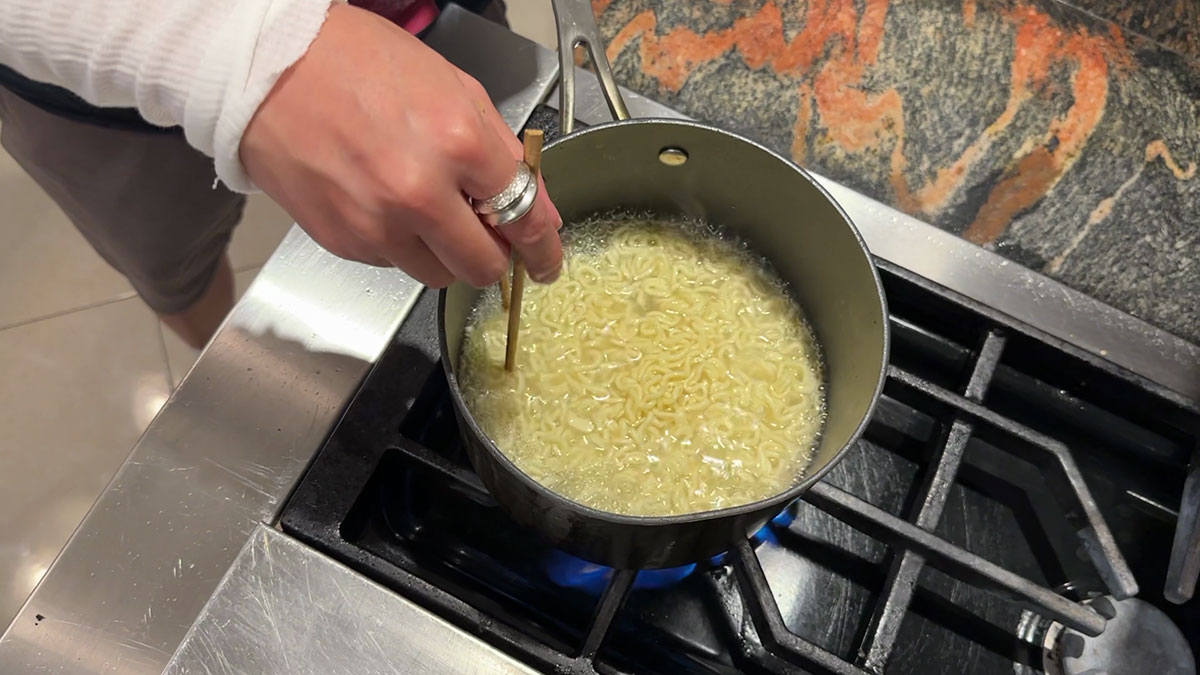
Cook the noodles: Boil water in a pot with a handle and add the noodles. Once softened, mix it around to loosen and air them, and continue cooking until al dente.

When your preferred doneness for the noodles is reached, use a tong or chopstick to take them and place them on a plate, then keep the water in the pot. Pour the oil packet on the noodles and mix it thoroughly to prevent it from sticking together.
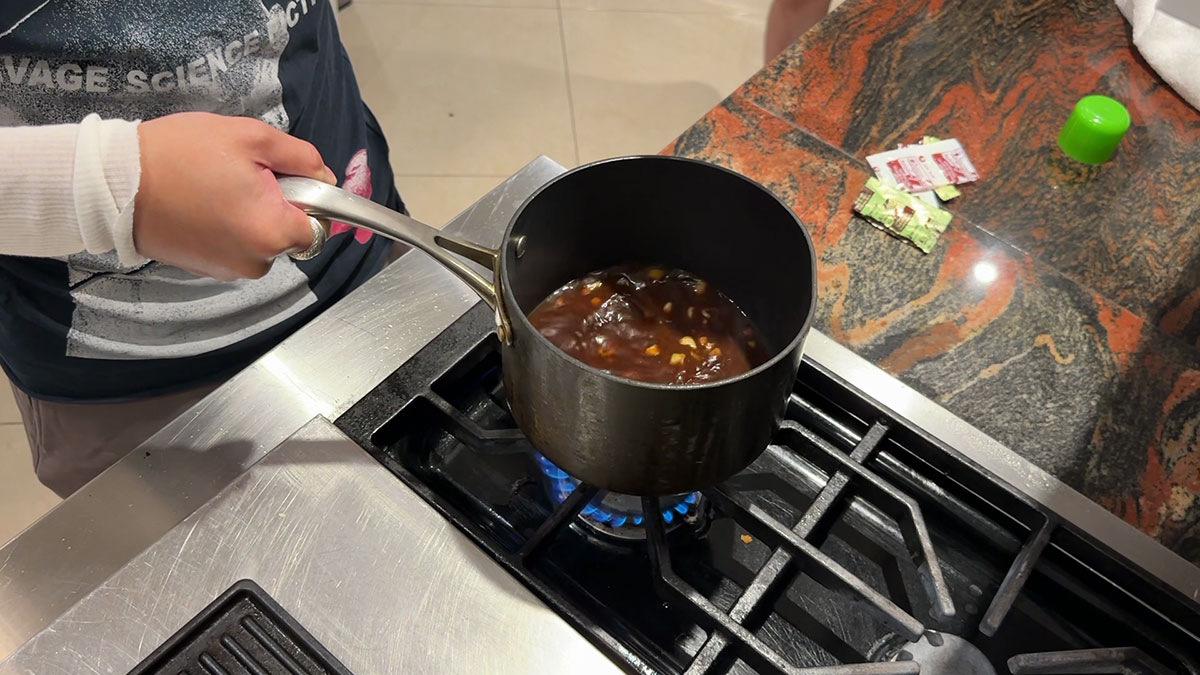
Make the sauce: The sauce is usually made by reducing water from cooking the noodles and then directly adding the seasoning packet.
However, Danny goes the extra mile by removing the noodles from the pot, keeping about ½ cup of the noodle water, adding the vegetable and sauce packet into it, and boiling it over medium heat. The starch left in the water will help thicken up the sauce.
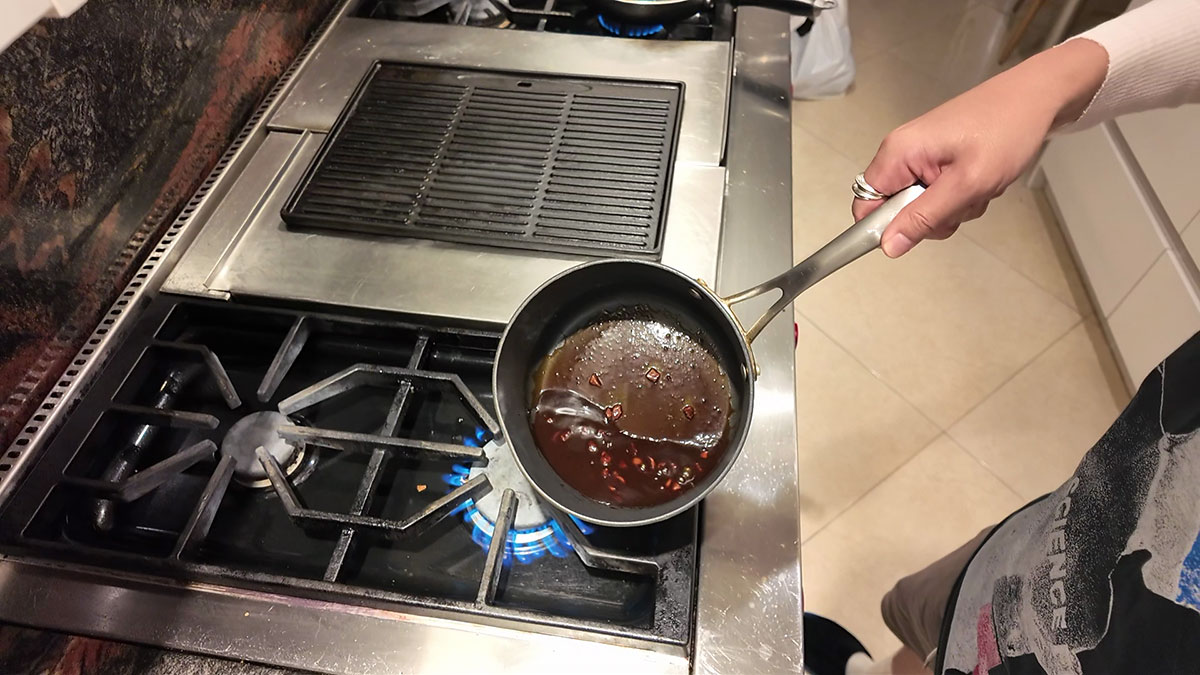
When boiling, use the handle to swirl around the sauce as opposed to mixing it with a spoon so it helps in removing clumps of the powder and quickly reducing the sauce. Let the sauce boil until it’s a bit thick. To check if it is done, the sauce should lightly cover the bottom of the pan.
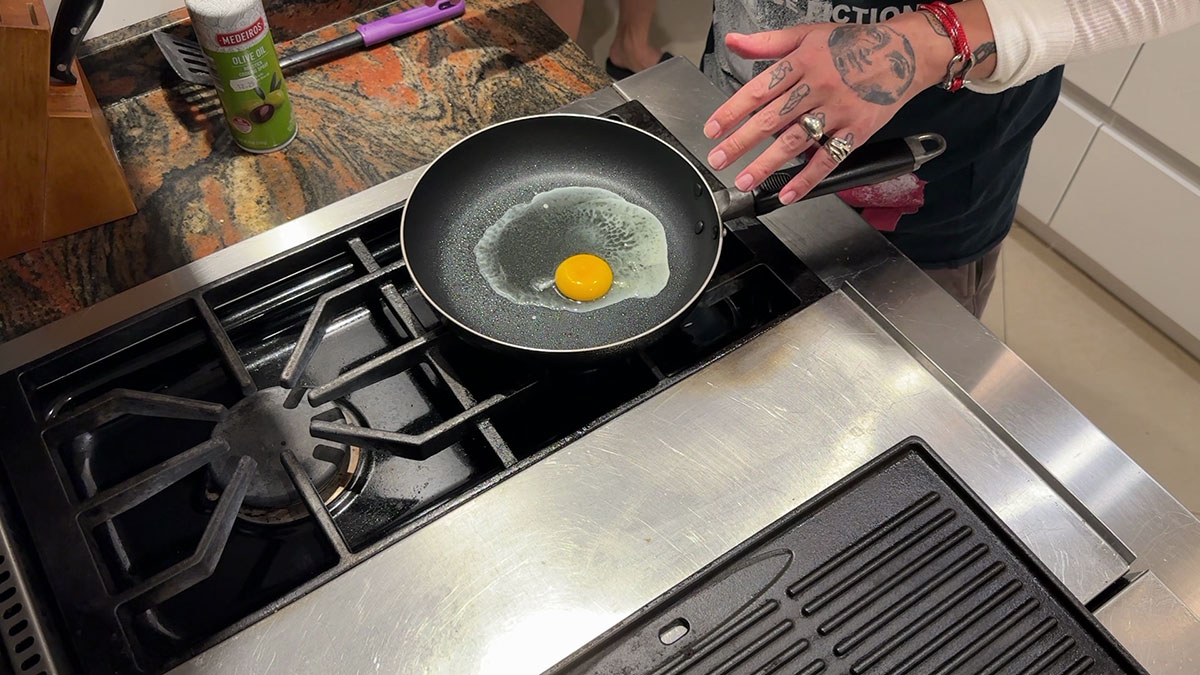
Fry the egg: In a lightly oiled pan on medium heat, place the egg and cover to speed up the process. After two minutes, it should be done where the egg whites are cooked but the yolk is runny.
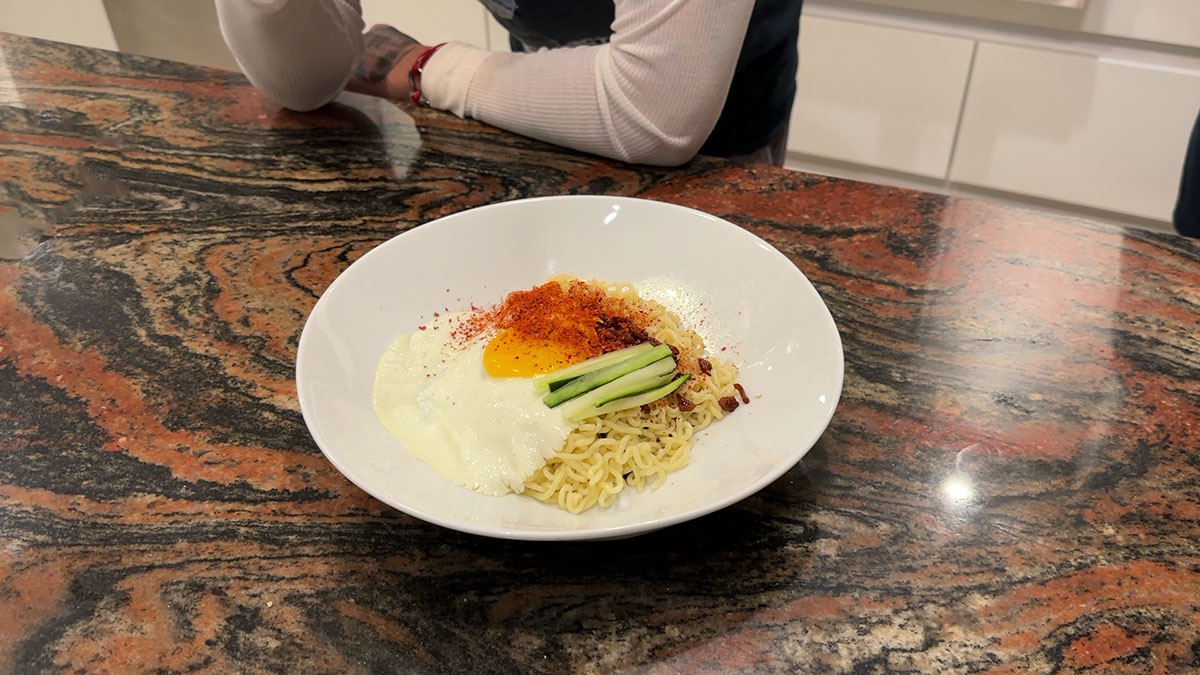
Plate the noodles: Now pour the chapagetti sauce over the noodles, top it with the egg and cucumber, then sprinkle a bit of gochugaru on top. This is a simple but pretty and delicious dish!
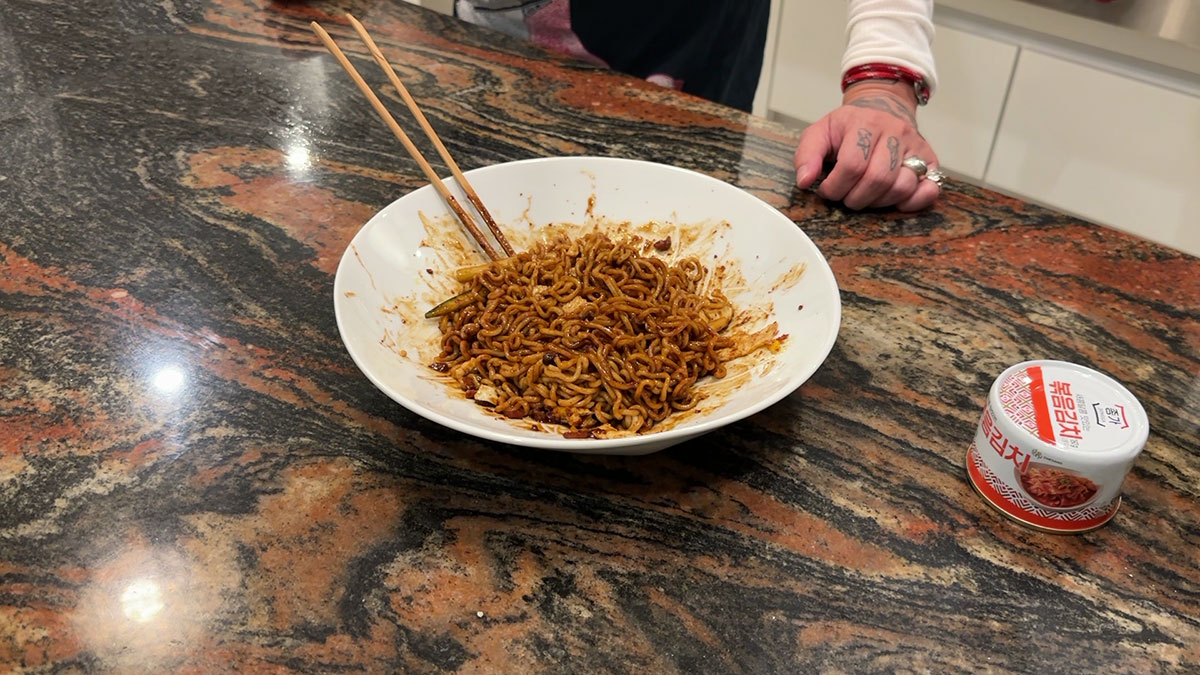
Serve the noodles: To eat, mix the noodles thoroughly, incorporating all the elements together. Take a bite of the noodles, then the kimchi, and enjoy!
Danny, His Grandma, and Korean Culture
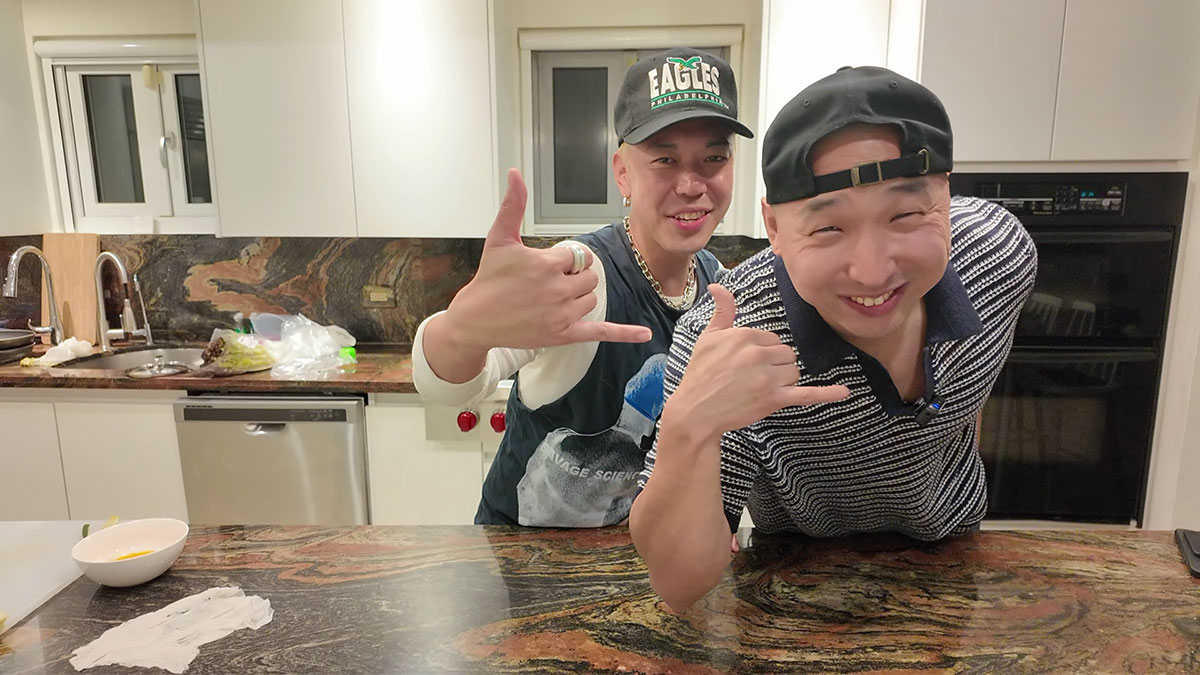
Danny and I used to be roommates when we were still young and broke. I used to find it really funny because he has taken making Chapagetti very seriously, but when he told me the story, I never saw it the same way again.
When he was young, his parents weren’t around much, and his grandma raised him. They loved jjajangmyeon, but they also didn’t have much, so they couldn’t go to restaurants to have it.
His grandma made do with Chapagetti, making it with intricate steps to mimic the real thing. The end result isn’t very different from the usual; it is still not jjajangmyeon, but it definitely tastes so much better. She passed it down to Danny, and he says he would proudly pass it down to his future kids.
This may seem very simple to many people, but food is a love language. With love, you can take simple ingredients and turn them into a meal that your family enjoys. Danny says that this creates unique and special core memories for your kids, your husband/wife, and your loved ones that will be passed down to generations.
I’m honored to make space for this amazing story in my blog and Danny is also happy to share this with everyone because this is his grandma’s legacy, and he wants it to live on. This also represents the very bloodline of Korean culture–food made with love, transcending circumstances, and tested through time.
Me and Danny go all the way back when we were still kids with merely big dreams. I used to drive him to record studios hours away from our dorm, and in return, he inspired me to be delusional. He truly believed in his craft, in his vision for it, and what it can do even when no one could see it. He did; he put in the work. In his words, “I’m gonna die trying”, and in the sidelines, I saw it come to life.
I took that delusion, that vision, that belief, and it made me the creator I am today. Here we are, living the life we once dreamed of. We still have a long way to go because now more than ever, the things we are working toward are already bigger than ourselves. Check out more of our conversation about our story, Korean culture, and life on the vlog! If anything, I want to end this blog with his words: “If anybody that has been afforded a lot of opportunities, your duty as a human being is to offer those opportunities back.”
Make sure to leave a rating, a comment, or tag me on Facebook, Instagram, or Tiktok when you chop them up! Yeobosayo!
Best Way to Make Chapagetti
Equipment
- Pot with Handle
Ingredients
- 1 pack Chapagetti
- 2-3 cups Water
- Egg
- Cucumber Julienned
- Gochugaru
Instructions
- Julienne the cucumber and take the egg out of the fridge to warm it up.
- Boil water and add the noodles.
- Once softened, mix it around to loosen up and cook evenly. Cook until al dente.
- Take out the noodles using a tong or chopsticks, then place them on a plate. Keep the noodle water in the pot.
- Add the oil to the noodles and mix to keep them from sticking.
- Leave ½ cup of noodle water in the pot and discard the rest, then add the vegetable and seasoning packet.
- Place the pot on medium-high heat, mix the sauce around using the handle of the pot, and cook until thickened up–you should notice that the sauce kind of coats the bottom of the pot. This will take about 5 minutes.
- Lightly oil a pan and place it on medium heat. Add the egg, cover, and cook it for 2 minutes–the whites should be cooked while the yolk should be runny.
- Pour the sauce over the noodles, top with the egg, and garnish with gochugaru and cucumber.
- Serve with kimchi, and enjoy!
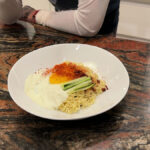
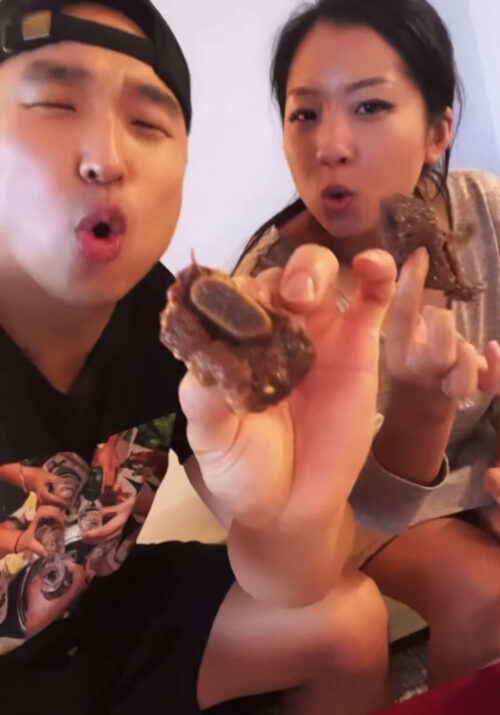
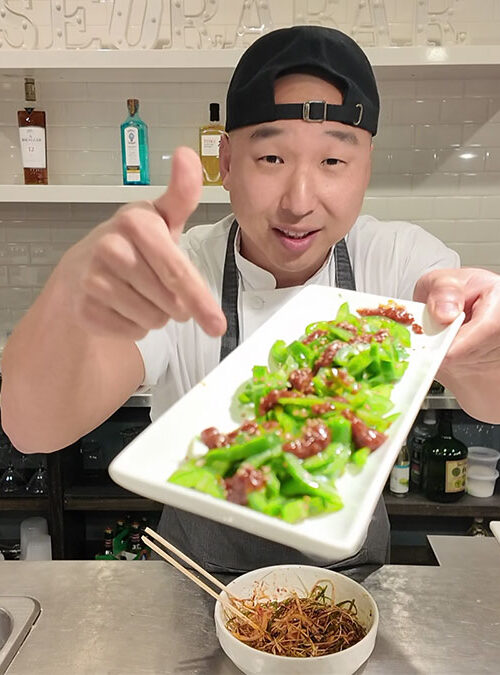
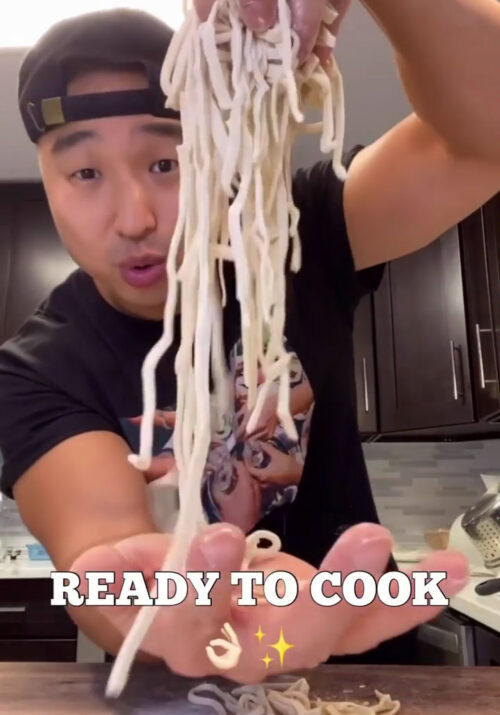


Leave a Reply